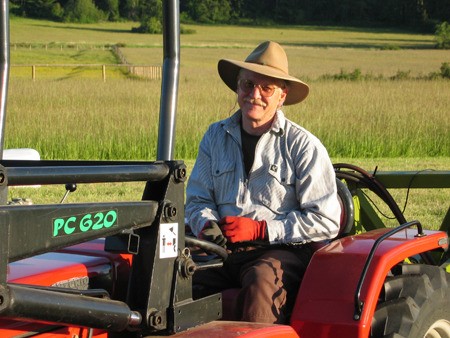By Bruce Gregory
Special to the Journal
There have been a lot of interesting comments posted lately in the various news outlets about the idea that if your property is not in a current-use or other tax break program, you are paying more than your share.
I would like to give a perspective that comes from the agricultural community point of view, and I know that many of the members of the Ag community and the community that buy and consume our products would speak from the same side of the fence.
First off, my farm has been in the current-use farm and agriculture (CUFA) program since the early 1980s. We play by the rules and we provide the information requested by the assessor for monitoring and compliance with the state mandated program. We maintain several farm enterprises and grow several locally consumed crops. Our customers support us; we support them with nutritious, healthy produce and meats.
We also support the community in many other areas that have been left out of the discussion.
As a farm, we are blessed with good, fertile soil, clean, quality water and big interest in sustainability. We want the systems we work for. We want them to move on through time. We work our way through the seasons with a lot of effort, work and sweat.
Some of this effort is creating conditions that allow us to harvest the sun, the basis of all agriculture. We like to think that this work is what pays our additional taxes and part of my feedback to you the reader, and fellow taxpayer, is this; a lot of the positive benefits and issues are being ignored.
So, what do you get as a landowner in exchange for my taxes being somewhat lowered? Are your taxes so high that you need a scapegoat (pardon the pun)?
Guess what, taxes are very low in San Juan County because we have one of the lowest tax rates amongst all the counties. Here are some of the hidden or not often thought of benefits you do get:
What about those pastoral fields, grazing livestock, orchards, field crops and a local food system? This is a kaleidoscope that follows the seasons. Is this not a geography of place that supports rural elements?
This is a specific set of outcomes you get to live amongst and participate in. It does not happen in a vacuum, someone has to manage the land to get to it. You probably enjoy seeing it. You may even be a lucky consumer of a product that was grown on those very same lands.
Without farmers and farmland you would not have these. You would live amongst houses. Your taxes would be even higher as it is well known that rural landscapes require less in services (i.e. taxes) than houses and sprawl.
Clean water, clean air, and more importantly, in these days of the climate change debate, carbon sequestration are additional benefits you get. All the lands in agriculture and forest have a profound role to play in filtering rainwater and seasonal run-off while providing a massive but often hidden benefit.
Their work load is built-in, cycling nutrients and carbon. Farms and forests when managed by humans properly, enhance these cycles. What happens to the personal level of pollution that each of us is responsible for? Well, it just so happens that grasslands do a very good job of capturing CO2. So do forests. We are talking giga-tons here.
If we did not have those farms and trees found in our rural lands we would not be maintaining a bank of sequestration by keeping these lands open. Try putting a price on some of these items so often swept under the rug of anger and myopic outlooks.
When you pay your taxes think beyond the property line, think out into the whole that makes up these islands we call home.
There are folks who have no doubt taken advantage of the current tax deferment programs. Happily, those who did not play by the rules will have other options to consider. We don’t like working up a sweat for those types and it enrages us to think they would get the same break as we do without all the work.
The folks that play by the rules, and this includes those in CUFA or designated forest land, are working hard to pay the community in services that few economists have attempted to quantify in dollars and cents.
Eco-system services are what it is all about. Think about this when you next drive through one of the island agricultural vistas.
Oh, and try the farmers markets, or your neighboring farm, for local food, eat closer to home.
— Editor’s note: A certified conservation planner and 28-year resident of San Juan Island, Bruce Gregory is a member of the San Juan County Agricultural Resources Committee and Noxius Week Control Board.




